15 Steps You Must Take Before Starting Mobile App Development
Gone are the days when the apps were simple and offered only basic functionalities. With the advent of smartphones and the rise in popularity of mobile apps, customer demand for high-quality apps has also increased manifold. According to Business of Apps, around 28% of apps get uninstalled if the user finds a bad registration experience, and it is not worth keeping. However, in today’s era of cut-throat online competition, building a high-quality and successful mobile app is not a simple task, considering the fact that there are a plethora of mobile apps that are flooding the market. It necessitates meticulous planning, research, design, development, testing, and marketing.
When it comes to developing a mobile app, a variety of things must be considered, including the target audience, platform, technology, features, security, budget, and launch strategy. If these elements are not considered, the app may fail to meet user expectations and company objectives.
Let’s get into the nitty-gritty and find out the factors that you need to consider before developing a mobile app.
Table of contents
- Factors You Must Consider Before Starting Mobile App Development
- 1. Market Research
- 2. Monetization Options for Your App
- 3. Define your Target Audience
- 4. Define Your Plan of Action
- 5. Choose the Right Type of App
- 6. Plan for App Store Optimization
- 7. Define Your resources
- 8. Ensure security measures
- 9. Select the Right Platform
- 10. Define User Interface/ User Experience
- 11. Implement Essential and Unique Features
- 12. Plan your Budget and Timeline
- 13. Create an in-depth Marketing Strategy
- 14. Testing
- 15. Launch it Right
- Transform Your Ideas into Exceptional Mobile Experiences
Factors You Must Consider Before Starting Mobile App Development
With over a thousand apps launched daily, the market competition in mobile app development is intense. Before you start any new app development project, certain factors must be taken into consideration. The mobile app development process is a very complex process that includes research, technology selection, designing, security, testing, and launching. All these phases require thorough planning to carry out each phase smoothly and efficiently. Read on to find out the factors that you need to consider before starting the app, which are discussed in detail below.
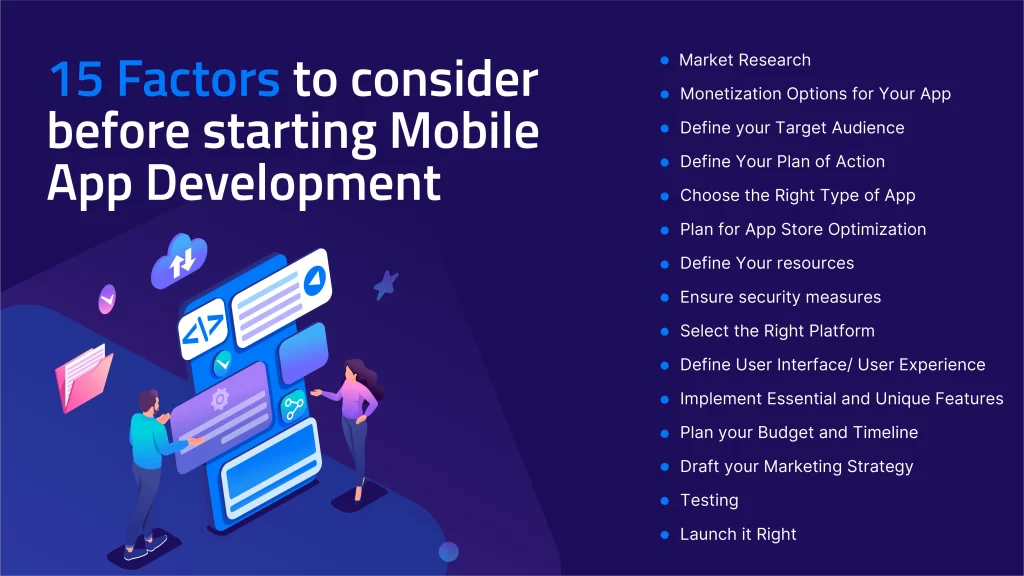
1. Market Research
Before diving into mobile app development, thorough research is essential to ensure your app’s success. Not only does it help you understand the platform you’re entering, but it also helps you find the gaps in the market and carve out a niche for your mobile app. Market research starts with an in-depth analysis of competitors from the same niche.
Market research involves the analysis of competitors and the strategies they follow to achieve their current position in the market. Extensive market analysis helps you understand the mistakes that your competitor made, and you can avoid them. This will help you differentiate your mobile app from the competitors and will help you define your USP (Unique Selling Point) more effectively. In addition, customer feedback also plays an important role in understanding future demands, likes and dislikes, preferences, and choices. This will provide you with the pain points of the mobile app and will help you build a mobile app with exceptional user experience.
2. Monetization Options for Your App
In addition to doing in-depth market research, having a clear monetization strategy is also an important aspect of mobile app development for a business. This involves employing various methods, such as offering subscription services, displaying advertisements, or charging users to download the app. The key lies in striking the right balance between delivering value to users and simultaneously generating revenue to sustain and grow your business. According to Statista, in 2022, the total revenue from mobile apps reached $437.8 billion and is expected to rise to $781.7 billion by 2029. This gives businesses ample opportunity to create a revenue source other than core business.
If you want to start making money from your app directly, you can follow different monetization models. The most common monetization models used by businesses are:
- Freemium: In this monetization model, users download the app from the Play Store and can use the app without paying any charges. However, there are certain features that will unlock if you pay.
- Premium: Premium is a monetization model where the users pay first before installing the app and then access all the features of the mobile app.
- Subscription: One of the best monetization models for any type of mobile app, the subscription model generates recurring revenue. The user subscribes to the plan for a certain period and then can access the specific features.
- In-App Ads: Also known as in-app marketing, in-app ads are a monetization model where advertisements are used as the revenue model for companies, where they get paid to run the ads of different companies.
- In-app purchases: In this model, users purchase some features from the mobile app. Sponsorship is often employed by businesses when they get sponsorships for certain features or activities to add to the app.
3. Define your Target Audience
It goes without saying that a well-defined target audience is crucial for your mobile app. Target audience lays the foundation for your mobile apps’ design, features, and strategies. Market research reveals how your competitor promotes his app, fulfills customer needs, and also helps you mitigate risks and reduce chances of failure.
You can single out your target market by analyzing your consumers and defining your problem statement with more clarity. The solution you are providing for the trending problem statement and the populations concerned helps you to get an idea about your target market. Understanding the target audience’s responses, feedback needs, and demand will help your business grow and engage more audience and users to the mobile app. Finding a target audience involves in-depth market research, competitor analysis, and trying to find out the type of audience they cater to. Once the target audience is clear, you can select the options, features, and other functionalities your app offers.
4. Define Your Plan of Action
A well-defined and strategized prototype works as a roadmap for mobile app development. Before starting to develop a mobile application, make sure to understand the entire process and have an efficient plan for it. This planning section includes setting milestones, assigning tasks to team members, and defining KPIs to measure success. While defining your plan, include contingency plans for potential challenges or obstacles that may arise during the development process. This will help you navigate the complexities and issues of app development with confidence at the early development stages.
Having a well-structured plan not only allows you to address factors such as goal outlines, timelines, milestones, and the necessary resources for every phase of the development process but also helps to keep app development on track. Not to mention, it also prevents misunderstandings among team members and keeps the project moving forward efficiently.
5. Choose the Right Type of App
Irrespective of the industry vertical you are dealing with, the type of mobile app that you develop will significantly impact your mobile app’s success. Most applications can be classified as either web apps, native apps, or hybrid apps. Native apps are applications built specifically for one operating system in a programming language native to that OS. Web apps are built to work within a web browser, while hybrid apps can work in multiple environments (e.g., on the web and mobile devices).
While native apps can handle heavy tasks and problems that require easy updates, they are best suited for web apps. Furthermore, hybrid apps are similar to native apps, as they allow users to access device features. Native and hybrid apps offer consistent and engaging user experience and interface. Web apps have limited access due to internet connectivity and web browsers. On the other hand, hybrid and native apps are accessible for offline features.
6. Plan for App Store Optimization
Did you know that 35-40% of mobile apps get rejected due to poor App Store Optimization strategies by the Google Play Store and Microsoft App Store? Getting your mobile phone ranked on the Google Play store and App Store requires successful app store optimization strategies. ASO is a similar process line SEO and is meant to improve the organic ranking of your mobile app on the app store. It plays an important role in the app’s installation and visibility. ASO is one of the prominent things to consider before you begin with mobile app development. It serves as the first step to your app’s installation. You should optimize your app by using the keywords that users often search. Over 55% of apps are installed through searches due to their exceptional design and presentation. You can choose an attractive logo for your app that defines your app’s functionality. App store optimization gives an opportunity to outshine other apps with your app’s design, interface, and unique features.
You can perform the app store optimization by optimizing the name of your app. Icons play an important role in the downloading and installation of mobiles as they symbolize the app standard. One of the prominent ways to optimize the app store is keyword optimization. Keywords play an important role in the search for any app, and apps that rank in the first position have a high probability of getting downloaded. Screenshot optimization also plays a crucial role in the visibility of your mobile app as it helps businesses give a short walkthrough to their app. Description optimization also plays an important role in the visibility of your app, as when users search, the words in the description help them discover your app readily.
7. Define Your resources
Before you embark on mobile app development, you need to find out what kind of mobile app resources your mobile app requires. Mobile app resources are defined as the files or the external data that support the Android or iOS app while running. These files help developers build the app on time and smoothly perform the needed version updates. There are different types of Android or iOS app resources that expert developers classify.
Nowadays, the advanced resource files used by most mobile app developers to create intriguing designs are animation files, which contain bitmap files such as .png, .jpeg, .gif, and XML files with graphic descriptors. Apart from advanced resource files, other resources used by developers include the color state list, which helps to determine the color depending on the state. Furthermore, the drawable resources are used to redefine bitmap or XML files. Layout resources are used to define the app’s interface and are stored with res/layout/ under ID R.layout. Menu resources are used to define the app’s menu. Other resources are also defined, and the values are taken as boolean, integer, dimension, color, and other arrangements.
8. Ensure security measures
With mobile applications becoming more and more popular with each passing day and businesses developing their own apps, the number of hacking and information leak cases has also risen exponentially. The issue of mobile application security is a growing area of concern within the mobile industry after a number of high-profile data leaks. Not to mention the fact that malicious hackers are targeting applications with sophisticated attacks. Needless to say, application security is no longer optional; it has become an absolute necessity. You can guard your app from attackers or hackers by having a strong source code that can control the authentication and authorization. You can also employ Multi-Factor Authentication to improve your security, which helps create a two-level authentication and implements a one-time password feature.
If your app collects sensitive data from the users, you need to consider implementing file-level and data encryption to enhance your security measures. Furthermore, you can utilize the latest cryptography technologies, leverage pen testing, and secure your data in transit. In addition, you can deploy tamper detection, practice continuous testing and updating, and individual code signing certification for better protection from hackers and malicious activities.
9. Select the Right Platform
There’s no denying that your choice of technology stack will directly affect how users interact with your application. You can turn your idea into an innovative and creative mobile app with the integration of the right tools and appropriate platforms. Mobile app platforms are software programs that have libraries, tool kits, files, and external codes that help developers improve the apps’ performance and increase functionality.
Expert app developers employ many platforms like Alpha Anywhere, Flutter, Mendix, Xamarin, Unity Ads, Ionics, and more. While Alpha Anywhere is ideally employed for both front-end and back-end and is a low-coding application development platform, Mendix is the fastest and easiest way to a low-coding application development platform. Furthermore, Flutter is best suited for UI with native features for web, mobile apps, and desktop applications. Xamarin is employed for the add-ins in the Microsoft Visual Studio that help developers develop Android, iOS, and Windows apps with the help of C# programming.
Also Read: Complete Guide on Mobile App Development

10. Define User Interface/ User Experience
Let’s face it, a well-designed UI/UX can make or break an app’s success, influencing user engagement, retention, and overall satisfaction. You can improve your UI by designing the animations, adding GIFs, flawless navigation, seamless loading, and adding the design as per the feedback of your target users. UI/UX can also be improved by the selective placement of the features, animation, and GIFs in their places, which makes their presence more effective.
An intuitive structure of UI/UX helps businesses retain their customers for a longer period, increases productivity, boosts branding, and reduces cost-effectiveness. All these can be achieved by employing market research, users’ points of view, less loading time, and having a flow in the graphics of the mobile app.
Also Read: Complete Guide to Mobile App Development
11. Implement Essential and Unique Features
To make sure that your mobile app performs well and has all the chances to be successful, you should be aware of the characteristics of mobile application development that make an app market-ready. Furthermore, to integrate critical and distinctive features, prioritize your app’s core functionality and value proposition over superfluous and complex extras.
Furthermore, analytics and feedback technologies like Google Analytics, Firebase, and App Store Connect can help you identify and implement crucial and distinctive features for your app. These tools will assist you in measuring and improving app performance and user satisfaction, as well as identifying new opportunities and insights for your app.
Also Read: Must Have Checklist for Apps
12. Plan your Budget and Timeline
A well-planned budget and timeline for mobile app development is crucial for avoiding frequent problems and delays, like underestimating, overspending, and missing deadlines. While planning your budget, break down your entire project into various phases, such as planning, design, development, testing, and launch, and estimate the costs associated with each phase. Having a detailed budget for application development will help you in allocating resources effectively and prevent unforeseen expenses.
In addition to budgeting, setting realistic timelines is crucial for managing expectations and ensuring timely delivery. The timeline should clearly indicate app development start and end dates, as well as intermediate deadlines for tasks and milestones. To estimate and allocate development resources, you should use project management and collaboration tools like Slack, Trello, and Asana. By using these tools, you can not only plan and track your app development progress but also manage and monitor your development resources efficiently.
13. Create an in-depth Marketing Strategy
In today’s highly competitive world, a robust app marketing strategy can be your blueprint for success. Besides, a well-designed application would not grow without a good marketing strategy and implementation. While making your marketing strategy, make sure to define your target audience, as different mobile applications have different users. In addition, your strategy should include a mix of channels, like content marketing, email marketing, social media, and paid advertising, tailored to your target audience’s preferences.
Furthermore, make sure a strong marketing strategy includes knowing the right time to promote your application and start making the noise at least 2 to 3 weeks before the launch. This will not only drive awareness but will also enhance app adoption among users.
14. Testing
You may have a top-notch mobile application with lots of unique features, but if it’s filled with bugs and errors, what good is it? Without proper testing, apps may crash, freeze, or otherwise malfunction on mobile devices. Mobile testing also helps to identify any bugs or glitches that may exist in an app before it is released to the public. According to a Kobiton study, 80% of mobile device users will likely abandon an app that doesn’t meet their expectations and is full of bugs. This underscores the importance of comprehensive testing to ensure that apps function correctly across different devices and operating systems. Make sure you create an in-depth plan to test your app and start with unit testing to ensure all components of the app work correctly. Your plan should be well-structured and consider all the phases of mobile app development.
Not only will it ensure that the app functions as intended, but it will also help you identify and rectify the issue before it reaches users’ hands.
15. Launch it Right
Launching a mobile application is a significant milestone, but it’s only the beginning of your journey toward success. Any successful launch requires careful planning and coordination among team members to ensure that everything goes smoothly. Launching apps includes procedures of introducing and promoting them to the target audience as well as the market. Make sure you plan for the launch of a mobile app effectively in the competitive market. It is important to conduct final tests, debug, publish it in the app stores, and prepare marketing materials. In addition, you should have a launch-day strategy in place, like social media campaigns, press releases, and influencer outreach.
Before you start mobile app development, you should consider the dates and time span. Your plan should have all the details for each and every phase of mobile app development. Launching is not the last phase, but it’s the beginning of your app journey.
Conclusion
As more mobile apps join the lineup of Apple App Store and Google Play store charts, the competition is getting higher each day in the tech industry. Planning the entire process and diving it into phases helps you manage them easily and reduces the risk of errors. Besides, your mobile app is the asset that’ll help you reach your target audience and meet your specific business needs. Every precaution that you take in the development process will build a bond of trust with your prospects.
Whether you’re developing an iOS, an Android, or a cross-platform app, keep in mind the above-mentioned steps you must consider before you start mobile app development.
Transform Your Ideas into Exceptional Mobile Experiences

Want to create a high-quality mobile app? Or planning to upgrade an existing app with new features? APPWRK IT Solutions offers a wide array of mobile app development services, ranging from iOS app development and Android app development to cross-platform app development, at a price that’ll fit right into your budget. Contact us now to transform your raw business idea into a highly intuitive and well-designed mobile app on the platform that best suits your specific requirements.
About The Author
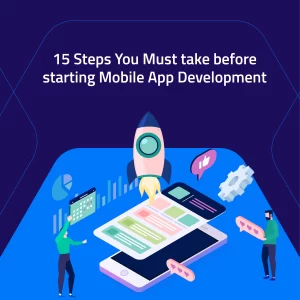
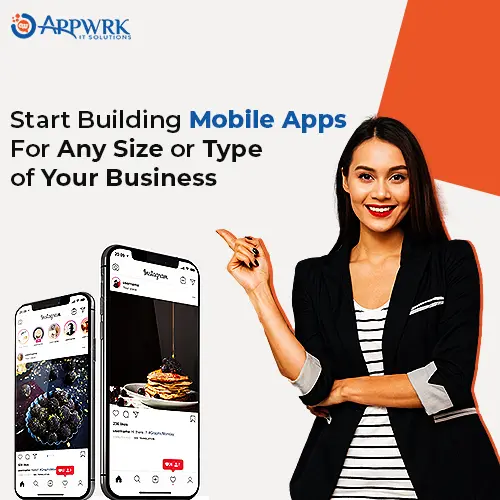

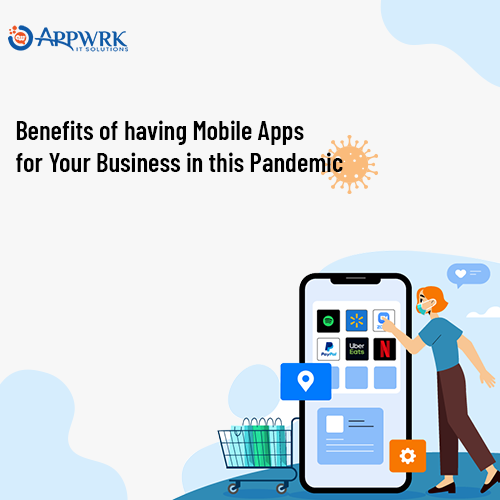
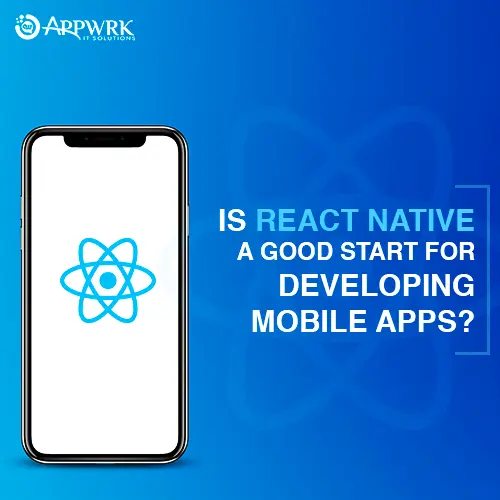
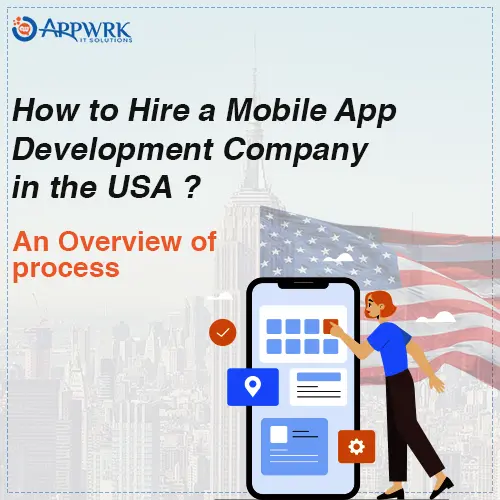
 Free Quote
Free Quote
















































